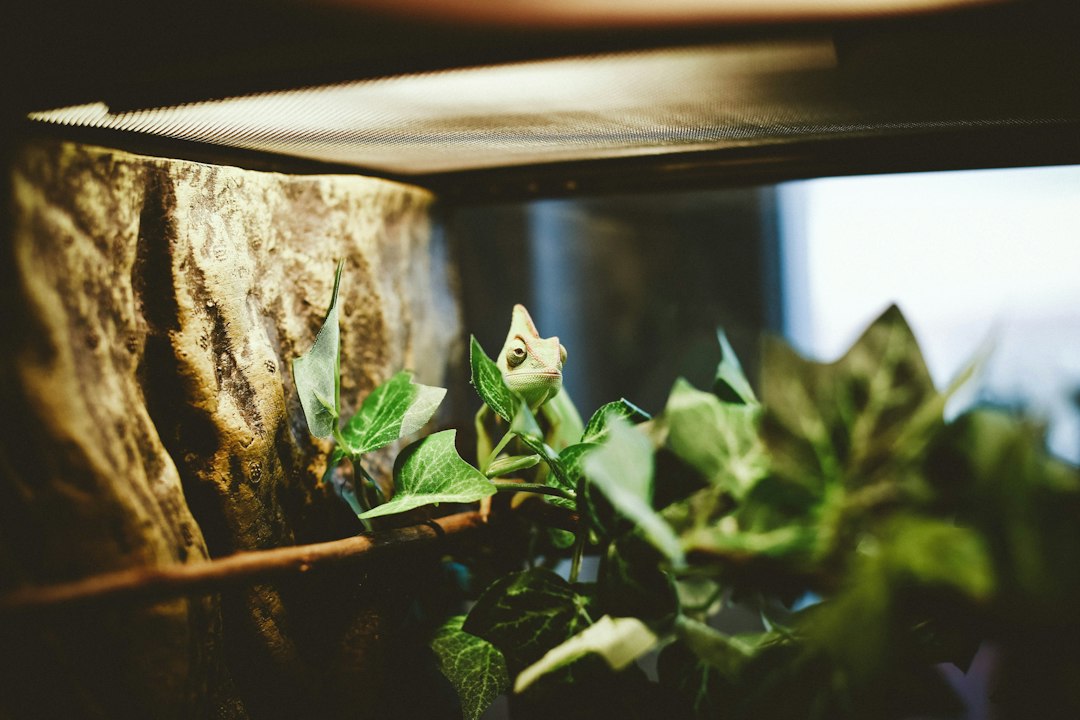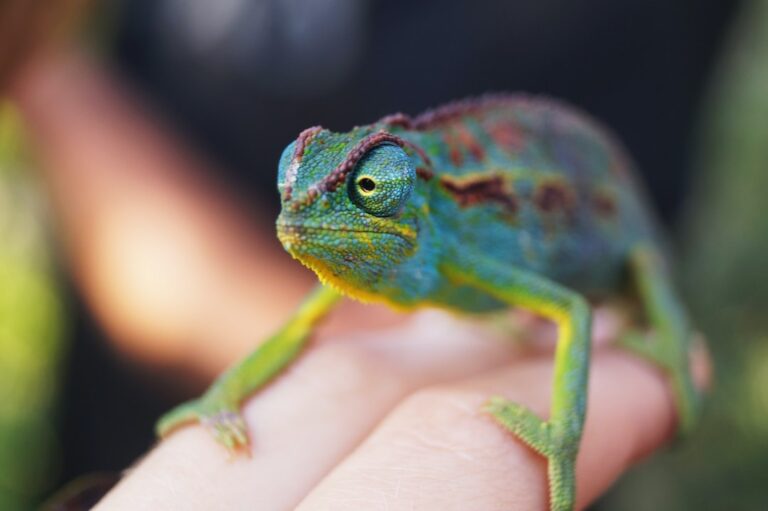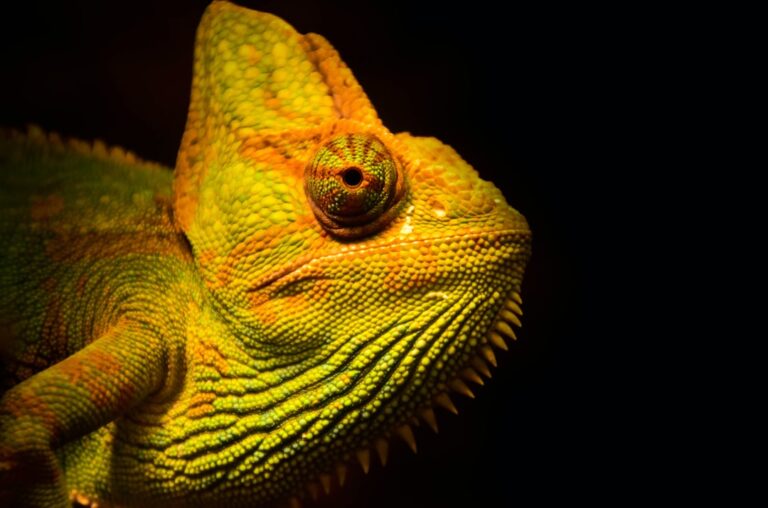Can Chameleons Get Pregnant Without A Male?
Chameleons are a unique and fascinating group of reptiles known for their ability to change color and blend into their surroundings. They are found in various parts of the world, including Africa, Madagascar, and parts of Asia and Europe. Chameleons have a number of unique characteristics that make them stand out among other reptiles. They have independently moving eyes, long tongues that they use to catch prey, and specialized feet that allow them to grip onto branches and climb trees.
Understanding chameleon reproduction is important for several reasons. Firstly, it helps us gain a deeper understanding of these remarkable creatures and their life cycle. Secondly, it allows us to better understand their population dynamics and how they contribute to the overall ecosystem. Lastly, it can provide valuable insights into the potential for asexual reproduction in other species.
Table of Contents
Understanding Chameleon Reproduction: Male and Female Anatomy
Male and female chameleons have distinct differences in their anatomy that are related to their reproductive functions. Male chameleons typically have larger bodies and heads compared to females. They also have a pair of hemipenes, which are the reproductive organs used for mating and fertilization. These hemipenes are located at the base of the tail and are usually hidden inside the body when not in use.
Female chameleons, on the other hand, have smaller bodies and heads compared to males. They do not possess hemipenes but instead have a cloaca, which is a common opening for excretion and reproduction. The cloaca is where the female chameleon receives sperm during mating and where eggs are laid during reproduction.
Can Chameleons Reproduce Asexually?
Asexual reproduction is a form of reproduction that does not involve the fusion of gametes (sperm and egg). Instead, offspring are produced from a single parent without the need for fertilization. While asexual reproduction is common in many plant species, it is relatively rare in animals.
Previous studies have suggested that chameleons may have the ability to reproduce asexually, but the evidence is limited. In 2009, researchers reported the first documented case of a female chameleon producing offspring without mating. However, further research is needed to determine the prevalence and mechanisms of asexual reproduction in chameleons.
Parthenogenesis in Chameleons: The Science Behind It
Parthenogenesis is a specific form of asexual reproduction in which an unfertilized egg develops into an offspring. It occurs when an egg undergoes a process called “activation” or “stimulation” that triggers its development without the need for fertilization. This can happen spontaneously or as a response to certain environmental conditions.
In chameleons, parthenogenesis occurs when a female’s reproductive system is stimulated to produce eggs without mating. These eggs then develop into viable offspring without the contribution of genetic material from a male. This process has been observed in several reptile species, including snakes and lizards, but its occurrence in chameleons is still relatively understudied.
The genetic implications of parthenogenesis in chameleons are complex. Offspring produced through parthenogenesis are essentially clones of their mother, as they inherit all of their genetic material from her. This lack of genetic diversity can have both advantages and disadvantages for the population as a whole.
Examples of Parthenogenesis in Chameleons
There have been several documented cases of parthenogenesis in different chameleon species. One notable example is the Jackson’s chameleon (Trioceros jacksonii), which has been observed to reproduce both sexually and asexually. In a study published in 2013, researchers found that some female Jackson’s chameleons were able to produce viable offspring without mating.
Another example is the Veiled chameleon (Chamaeleo calyptratus), which has also been observed to reproduce asexually. In a study published in 2017, researchers found that female Veiled chameleons were able to produce offspring without mating, and these offspring were genetically identical to their mothers.
While parthenogenesis has been observed in these and other chameleon species, it is still unclear how often it occurs in the wild. Further research is needed to determine the prevalence and frequency of asexual reproduction in chameleons.
The Pros and Cons of Parthenogenesis in Chameleons
Asexual reproduction has both advantages and disadvantages for chameleon populations. One advantage is that it allows females to reproduce without the need for a mate, which can be beneficial in situations where males are scarce or inaccessible. It also allows for rapid population growth, as females can produce offspring more frequently without the time and energy investment required for mating.
However, asexual reproduction also has its drawbacks. One major disadvantage is the lack of genetic diversity in parthenogenetic offspring. Without the introduction of new genetic material from males, populations can become more susceptible to diseases and other environmental challenges. Additionally, the lack of genetic diversity can limit the ability of populations to adapt to changing conditions.
How Do Female Chameleons Produce Offspring Without Males?
The process of parthenogenesis in chameleons is still not fully understood, but researchers have identified several factors that may trigger it. One possible trigger is stress or environmental factors that disrupt normal reproductive processes. For example, in captivity, female chameleons that are housed alone or subjected to certain environmental conditions may be more likely to reproduce asexually.
Another possible trigger is the presence of unfertilized eggs in the female’s reproductive system. These eggs may undergo activation or stimulation, leading to their development into viable offspring. The exact mechanisms behind this process are still being studied and are the subject of ongoing research.
Does Parthenogenesis Affect the Health and Genetics of Chameleon Offspring?
Studies on the health and genetic diversity of parthenogenetic chameleon offspring have yielded mixed results. Some studies have found that parthenogenetic offspring are just as healthy and genetically diverse as sexually produced offspring. For example, a study published in 2015 found that parthenogenetic offspring of the Veiled chameleon had similar survival rates and genetic diversity compared to sexually produced offspring.
However, other studies have found that parthenogenetic offspring may be more prone to certain health issues. For example, a study published in 2018 found that parthenogenetic offspring of the Jackson’s chameleon had higher rates of deformities compared to sexually produced offspring. These deformities included abnormalities in limb development and eye structure.
Further research is needed to fully understand the health and genetic implications of parthenogenesis in chameleons. It is also important to consider the potential long-term effects on population dynamics and overall species health.
The Role of Parthenogenesis in Chameleon Conservation
Parthenogenesis can play a role in chameleon conservation efforts by allowing females to reproduce without the need for males. This can be particularly beneficial in situations where males are scarce or threatened by habitat loss or other factors. Parthenogenesis can help maintain population numbers and genetic diversity in these situations.
However, there are also potential risks and challenges associated with parthenogenesis in chameleon conservation. The lack of genetic diversity in parthenogenetic populations can make them more vulnerable to diseases and other environmental challenges. Additionally, the reliance on asexual reproduction can limit the ability of populations to adapt to changing conditions.
It is important for conservationists to carefully consider these factors when developing strategies for chameleon conservation. This may include efforts to protect and restore chameleon habitats, as well as initiatives to promote genetic diversity through the introduction of new individuals from different populations.
The Future of Chameleon Reproduction Research
In conclusion, chameleon reproduction is a fascinating and complex topic that is still not fully understood. While chameleons are primarily known for their ability to reproduce sexually, there is growing evidence that they may also have the ability to reproduce asexually through parthenogenesis.
Further research is needed to determine the prevalence and mechanisms of asexual reproduction in chameleons, as well as its implications for population dynamics and overall species health. This research can provide valuable insights into the potential for asexual reproduction in other species and contribute to our understanding of the diversity of reproductive strategies in the animal kingdom.
Understanding chameleon reproduction is not only important for scientific curiosity but also for conservation efforts. By gaining a deeper understanding of how chameleons reproduce and how their populations are maintained, we can develop more effective strategies for their conservation and ensure their survival in the face of ongoing environmental challenges.
If you’re interested in learning more about reptiles, you might also enjoy reading the article “Can Chameleons Eat Spinach?” on ReptileFriend.com. It explores whether chameleons can safely consume spinach and provides valuable insights into their dietary needs. Check it out here!





